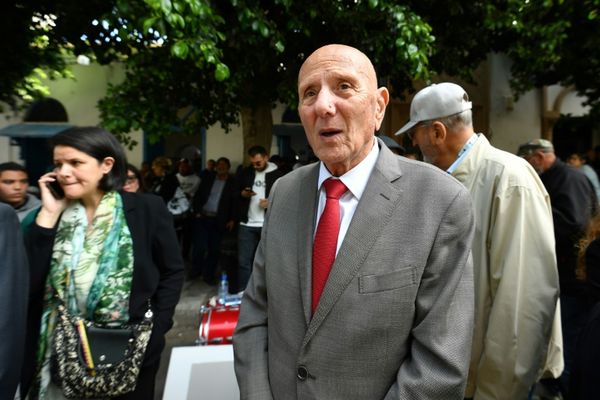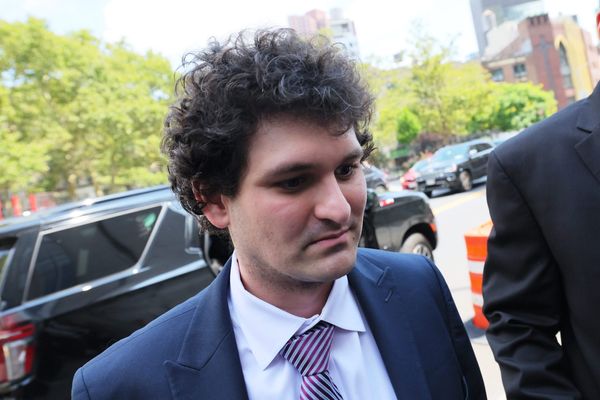The stories about Bill Gates started circulating in late January, around the time health officials announced the first confirmed case of Covid-19 in the U.S. According to certain—ahem—sources, the novel coronavirus hadn’t come from bats, but from Gates, the billionaire philanthropist and Microsoft Corp. co-founder. It wasn’t entirely clear why he would engineer a global pandemic, but versions of the conspiracy theory pinned it on Gates’s supposed desire to cull Earth’s population, or possibly to surveil it.
Then again, if it wasn’t Bill Gates, maybe it was the U.S. Army that had unleashed the virus, in an effort to undercut a rising China. Or it was created by a Chinese military lab in Wuhan. Or it was a consequence of 5G wireless networks, a view that some people in the U.K. took so seriously they went out and destroyed actual 5G towers.
There were also strange ideas about treatments. While doctors widely believed the virus to be untreatable with existing drugs, there were reports of a game-changing therapy that involved drinking industrial bleach—“Miracle Mineral Solution,” proponents called it.
These conspiracy theories circulated widely online as the virus spread, prompting warnings of an “infodemic” from public health officials. In late February, a little-known division of the U.S. State Department, the Global Engagement Center, or GEC, said the Russian government had pushed the Gates rumor. On May 8, the GEC said it had identified a network of fake Twitter accounts being used to spread disinformation, this time on behalf of China.
The GEC—pronounced “geck” in bureaucratese—is the federal agency responsible for fighting online propaganda from foreign actors. Created in the waning weeks of the Obama administration, it is, as Ohio Republican Senator Rob Portman has put it, the “central nexus of our work to create this effective shield against the falsehoods that threaten the integrity of our democracy—and other democracies.”
The consensus view in Washington is that the GEC, which employs just 120 of the State Department’s 75,000 staff, hasn’t accomplished much. But Portman and other supporters believe it turned a corner in 2019 with the appointment of Lea Gabrielle, who has the kind of résumé that plays well in the Trump White House. She’s a former intelligence officer and Navy pilot who was until recently a full-time correspondent for Fox News. Even so, Covid-19 represents a monumental challenge for her. It’s one thing for an online campaign to influence an election, still another for it to convince people a deadly virus can be treated with bleach.
Since she took over, the GEC has undergone something of a turnaround, persuading an administration that once seemed hostile to its existence to propose doubling its budget, to $138 million, for the coming year. A lack of funds, Gabrielle says, “could have crippled our ability to execute our mission.”
It remains to be seen whether Democrats will go along with the budget request, and there have been questions about the quality of the GEC’s work. Facebook Inc. and Twitter Inc. have said the office didn’t provide enough information to assess its claims of Russian manipulation in February, and Twitter says that many of the accounts the GEC flagged in May actually belonged to Western governments or journalists and were often expressing opposition to Chinese messaging.
Hanging over all this is the U.S. government’s biggest obstacle to eliminating misinformation: Gabrielle’s boss’s boss’s boss’s tendency to amplify the sorts of conspiracy theories the GEC was created to contain. Over the past three months, President Trump has lurched from downplaying the significance of the virus—comparing it to the flu and claiming that it would, “like a miracle,” disappear on its own within months—to implicitly calling for people to disobey shelter-in-place orders, even ones that followed his administration’s own guidelines. The White House and its allies have also increasingly begun to suggest, without offering much evidence, that the coronavirus emerged from a Chinese lab. Most notoriously, Trump stood in the White House briefing room and proposed a version of the Miracle Mineral Solution treatment, involving the injection of disinfectant. Officials in several states issued statements urging people not to ingest cleaning products, as did Reckitt Benckiser Group Plc, the company that makes Lysol. (Trump later claimed he was being sarcastic.)
The president’s antics have been, as he’s often boasted, must-see TV. They’ve also complicated the GEC’s already onerous job. As Gabrielle noted in congressional testimony on March 5, Russia’s strategy has been to “swamp the media environment with a tsunami of lies” that could confuse and divide Americans. That doesn’t necessarily mean Russia and China are developing conspiracy theories from scratch so much as amplifying what’s already online. In the age of coronavirus, the noise often comes from inside the house.
The GEC’s work dates to 2011, when the U.S. became concerned that terrorist groups such as Islamic State and al-Qaeda were using social media to recruit large numbers of disaffected young men. The State Department started a precursor group, the Center for Strategic Counterterrorism Communications, to argue online with propagandists and dissuade those who might have been drawn in by them. Among other things, it hired Arabic speakers and paid them to Photoshop posts from al-Qaeda affiliates in Yemen, altering images of American flags draped over coffins so they were Yemeni ones instead. The idea was to remind potential recruits that the group was actually killing locals.
The effort was a disappointment. The new group was short on resources, had only a cloudy vision of its mission, and couldn’t always count on support from other parts of the government, particularly the U.S. Department of Defense. It also turned out that State Department contractors make poor meme lords. Sometimes it took more than a week to get signoff for a single tweet. Once posts finally got online, it wasn’t always clear they did much good.
In his book Information Wars, Richard Stengel, a former managing editor of Time magazine who oversaw the team while serving as an undersecretary of state from 2014 to 2016, writes that jihadis were often just amused by their efforts. “Your boss is going to fire you if your tweets don’t improve,” one person tweeted at a contractor who’d attempted to clap back at a terrorist-run account. Stengel now questions whether countermessaging online is effective. “I welcome people trying to get good at it, but I concluded that what we were doing wasn’t working,” he says.
Later he worked with Megan Smith, a former Google executive whom Obama had appointed U.S. chief technology officer, to develop a plan to map the spread of foreign propaganda online rather than going tweet for tweet with the propagandists. In the final days of Obama’s presidency, a month after Trump won the 2016 election, Congress set aside $80 million to create the GEC, earmarking most of the money for countering Russian propaganda. In his book, Stengel writes that the first director of the agency likened it early on to the Office of Strategic Services, a predecessor to the CIA. For its part, Sputnik, the Russian government’s English-language news agency, compared it to the Ministry of Truth in George Orwell’s 1984.
Both assessments proved overblown. The Trump administration wasn’t particularly interested in countering Russian disinformation, discounting as a “hoax” the assessment, backed by U.S. intelligence, that Russia had used Facebook and other social media sites to influence the 2016 election. The administration didn’t bother appointing a permanent director of the GEC, and a State Department hiring freeze made it hard for the office to staff up.Finally, in February 2019, the department hired Gabrielle, who’d left the military for broadcast journalism. After a stint as a reporter at NBC’s San Diego affiliate, she joined Fox News as an on-air correspondent. She says her background at NBC and Fox prepared her well for the job. If you want to understand the dynamics of influence campaigns, a familiarity with the ratings-driven TV news industry is a good place to start.
The coronavirus has given many institutions struggling with disinformation an opportunity for a fresh start. Facebook, which was criticized endlessly in the aftermath of the 2016 election, has been uncharacteristically aggressive in its response to Covid. In mid-April it said it would begin inserting material from the World Health Organization into the feeds of users who liked or commented on misinformation. The social network, along with Twitter and YouTube, has also blocked posts shared by Brazilian President Jair Bolsonaro that questioned the need for social distancing and recommended the use of an unproven antimalarial drug, hydroxychloroquine, to treat Covid-19.
Things get muddier the closer they get to President Trump, though. Twitter didn’t remove his posts that seemed to suggest Americans disobey shelter-in-place orders, and wild claims about hydroxychloroquine circulated on social networks after Trump hyped the drug during White House briefings.
Meanwhile, tech companies have questioned the GEC’s conclusions about Russian and Chinese interference. Twitter cooperated with the GEC’s recent investigation into Chinese attempts to manipulate social networks but says that unlike the GEC, it could not definitively link the accounts to China. “When we can reliably attribute to state-backed activity—either domestic or foreign-led—we disclose them to the public,” a company spokesperson said in an email.
Sources of disinformation can be hard to pin down because regular social media users will often pass on nonsense without direction from foreign governments, says Camille François, chief innovation officer at Graphika Inc., a consultancy that specializes in the spread of information online. For that reason, she and other experts in the field worry that attributing conspiracy theories to foreign actors without sufficient evidence can be counterproductive. “Disinformation about disinformation can be an issue,” she says, noting that her comments apply to the industry generally.
Gabrielle says some of the GEC’s evidence can’t be shared because it contains classified material or because of other legal restrictions. But she says her office has a unique view into foreign influence campaigns—because it is a clearinghouse for research from other parts of the federal government, including intelligence agencies, presumably—and conducts its own analysis of social media activity and messages emanating from state-sponsored media.
Late last year the GEC assigned a staff member to coordinate with Silicon Valley, and Gabrielle says she wants to form deeper partnerships with tech companies. But she also argues that there’s some natural disconnect between her office and for-profit social media companies that the GEC works with. “My mission is to counter propaganda and disinformation that undermines our security and our policies and the policies of our partners and allies,” she says. “Those two aren’t always completely aligned.”
Despite her background at Fox, Gabrielle doesn’t come across as a pugnacious cable news warrior. She’s careful to the point of woodenness in interviews, consistently emphasizing the apolitical nature of her work. When New Jersey Democratic Senator Cory Booker asked her during her congressional appearance in March whether Trump has been making her job harder, she responded by saying only that she felt she had the administration’s support.
Critics point out that her public caution hasn’t always been evident in the GEC’s actions. Last year it funded a project called Iran Disinfo that targeted, among others, the National Iranian American Council. The group’s president, Jamal Abdi, who is a U.S. citizen, says he was overwhelmed by aggressive messages on Twitter with the hashtag #NiacLobbiesForMullahs. He says it’s inappropriate for the State Department to support operations that target Americans based on their political views. “The mandate these organizations have is to go after foreign influence networks,” says Abdi. “That’s a problem when groups like mine are lied about as being ‘foreign agents’ because we’re an immigrant community.”
Gabrielle says the GEC’s contractor conducted the attack without authorization. She’s since halted the effort. On April 24 the State Department’s inspector general released a report concluding that the GEC didn’t have necessary safeguards in place to make sure independent groups it works with are acting appropriately. The GEC accepted many of the conclusions, blaming the problem on staffing shortages it says it’s begun to address.
More funding would help, and Congress is considering the Trump administration’s proposal to double the GEC’s budget. Many Democratic lawmakers have been inclined to support the office, but some are concerned by the Iran Disinfo episode—and by what they see as the GEC’s unwillingness to communicate, according to congressional staffers.
Then there’s the frustration with Trump. Graham Brookie, who served as a communications adviser for Obama’s National Security Council when the GEC was formed, says the president’s lack of credibility on misinformation is a major impediment. But Brookie, who runs a research lab at the Atlantic Council, a Washington think tank, also argues that some version of the GEC will be crucial as the U.S. tries to adapt to the realities of the internet.
“Frankly, it’s the future of public diplomacy,” he says. Failing to fully support it now would just require future administrations to do so. “If Joe Biden wins in November,” says Brookie, Democrats would be “looking at their fiscal calendar like, ‘Oh, I wish we hadn’t defunded it because we were pissed at the Trump administration.’ ” —With Alyza Sebenius, Michael Riley, and Kurt Wagner Read next: Trump Embraces Snapchat as Battle for 2020 Youth Vote Heats Up
©2020 Bloomberg L.P.







